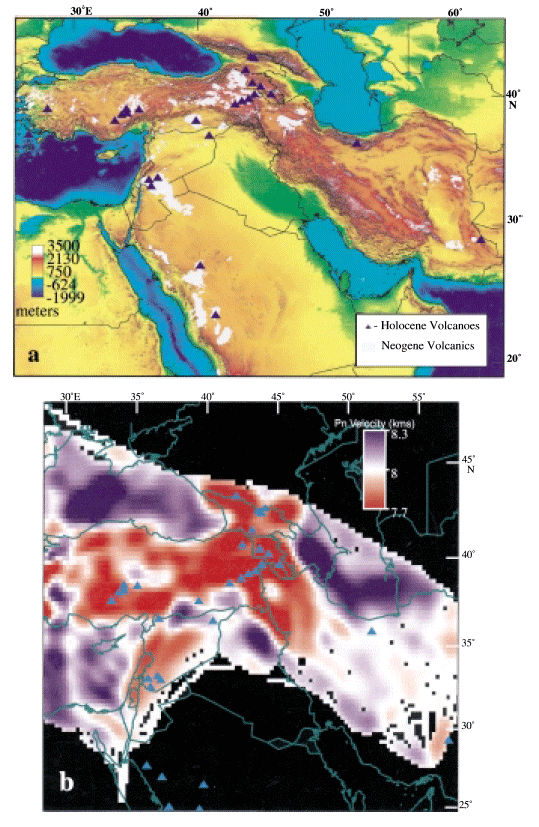
Observations based on relatively limited data recorded by sparsely distributed stations have indicated that regional seismic phase propagation (Lg and Sn) is very complex in the Middle East. Accurate characterization of regional seismic wave propagation in this region necessitates the use of a large number of seismic stations. We have compiled a large data set of regional and local seismograms recorded in the Middle East. This data set comprises approximately four years of data from national short-period networks in Turkey and Syria, data from temporary broad band arrays in Saudi Arabia and the Caspian Sea region, and data from GSN, MEDNET, and GEOFON stations in the Middle East. We have used this data set to decipher the character and pattern of regional seismic wave propagation. We have mapped zones of blockage as well as inefficient and efficient propagation for Lg, Pg, and Sn throughout the Middle East. Two tomographic techniques have been developed in order to objectively determine regions of lithospheric attenuation in the Middle East.
We observe evidence of major increase in Lg attenuation, relative to Pg, across the Bitlis suture and the Zagros fold and thrust belt, corresponding to the boundary between the Arabian and Eurasian plates. We also observe a zone of inefficient Sn propagation along the Dead Sea fault system which coincides with low Pn velocities along most of the Dead Sea fault system and with previous observations of poor Sn propagation in western Jordan. Our observations indicate that in the northern portion of the Arabian plate (south of the Bitlis suture) there is also a zone of inefficient Sn propagation that would not have been predicted from prior measurements of relatively low Pn velocities. Mapped high attenuation of Sn correlates well with regions of Cenozoic and Holocene basaltic volcanism. These regions of uppermost mantle shear-wave attenuation most probably have anomalously hot and possibly thin lithosphere.
This paper was published in Pure and Applied Geophysics by Springer Verlag. Springer Verlag retains the copyright.
The original publication is available at http://www.springerlink.com/, click here to view.
Figure 20.
Maps showing several independent data sets which may be correlated with both our Lg/Pg and Sn efficiency tomography results. Panel (a) shows both the topography of the Middle East as well as Holocene volcanoes and Neogene volcanic fields. Panel (b) shows the Pn velocity map of Hearn and Ni (1994). Regions of high topography generally have high Lg attenuation relative to Pg. We also see a fairly good correlation between low Pn velocities shown in panel (b) and high Sn attenuation.
